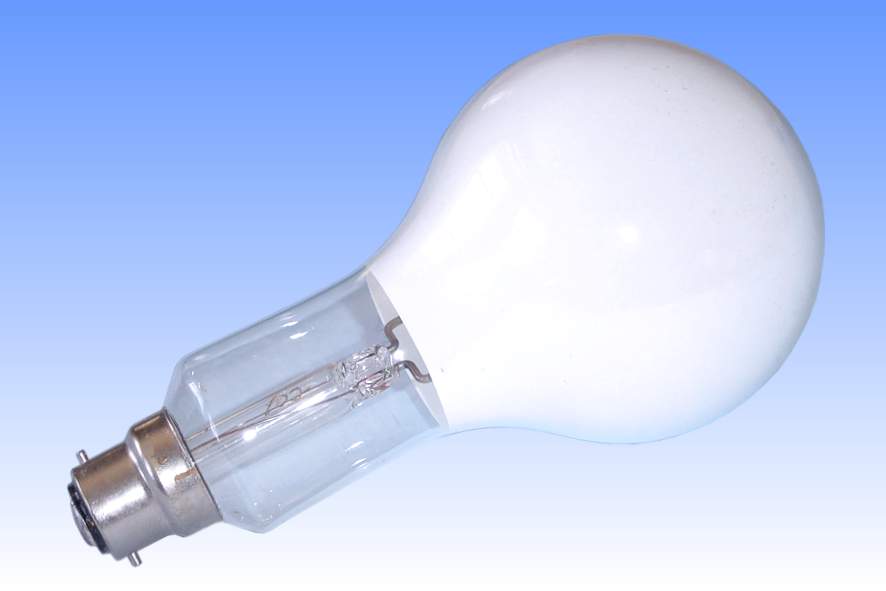
|
MBTL PowerWhite Mercury Blended Lamp |

The question is often asked as to why older mercury-blended lamps have round bulb shapes, whereas modern types share the same ellipsoidal glass as ordinary mercury lamps. There are two answers to this question.
When mercury blended lamps were first introduced, they were intended as direct replacements for incandescent lamps - hence it was advantageous to employ similarly shaped bulbs of the same dimensions to ensure maximum compatibility with existing luminaires. When fluorescent coatings were introduced to the range in the early 1960s, it was found that the ellipsoidal shape offered little benefit. It must be remembered that the primary reason for ellipsoidal bulbs is to achieve a uniform temperature over their surface, thus preventing overheating of the phosphor in certain areas. Phosphors lose efficacy rapidly if they are run at too high a temperature. Mercury blended lamps, of course, contain a tungsten ballast filament in addition to the arc tube, which produces a very great amount of heat. The bulb temperature is so high that the small benefit of the ellipsoidal shape is almost negligible.
Nevertheless, during the 1960s-1980s most manufacturers did migrate to the use of ellipsoidal bulbs for reasons of standardisation. That allowed a small cost reduction to be made by no longer having to change production equipment for the two different bulb shapes.

| Manufacturer: | Philips Electrical Ltd. | |
| Lamp Power: | 160 Watts | |
| Lamp Current: | 0.65 Amps | |
| Lamp Voltage: | 240/250 Volts | |
| Cap: | B22d/25x26 | Nickel plated brass |
| Bulb Finish: | Phosphor Coated | MgFGeO : Mn |
| Bulb Type: | A-90 | Soda lime |
| Overall Length: | 178 mm | |
| Light Centre Length: | N/A | |
| Electrodes: | Backwound thoriated | Double carbonate emitter |
| Inner / Outer Atmosphere: | Inner : Ar | Hg | Outer: Nitrogen |
| Luminous Flux: | 2,900 lm @ 100 hours | 2,560 lm @ 3,000 hours |
| Luminous Efficacy: | 18.1 lm/W @ 100 hours | 16.0 lm/W @ 3,000 hours |
| Colour Temperature & CRI: | CCT: | CRI: |
| Chromaticity Co-ordinates: | CCx: | CCy: |
| Burning Position: | Vertical cap up, or any if supply regulation is good | |
| Rated Life: | 6,000 hours (to 50% survival) | |
| Warm Up / Re-strike Time: | ||
| Factory: | Hamilton, United Kingdom | |
| Date of Manufacture: | September 1960 | |
| Original / Present Value: | £2 8s 0d (1965) | £28.52 (2002) |